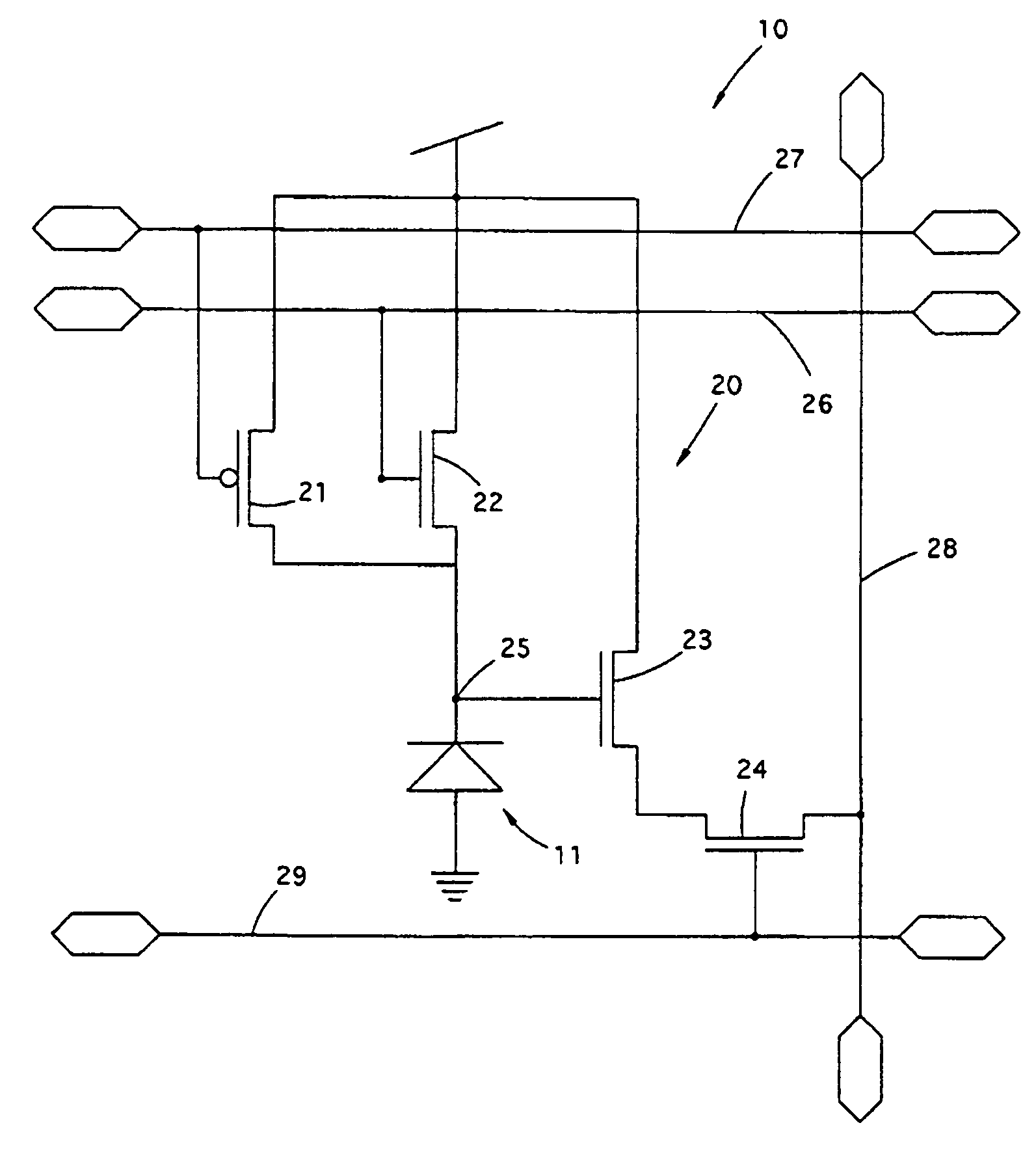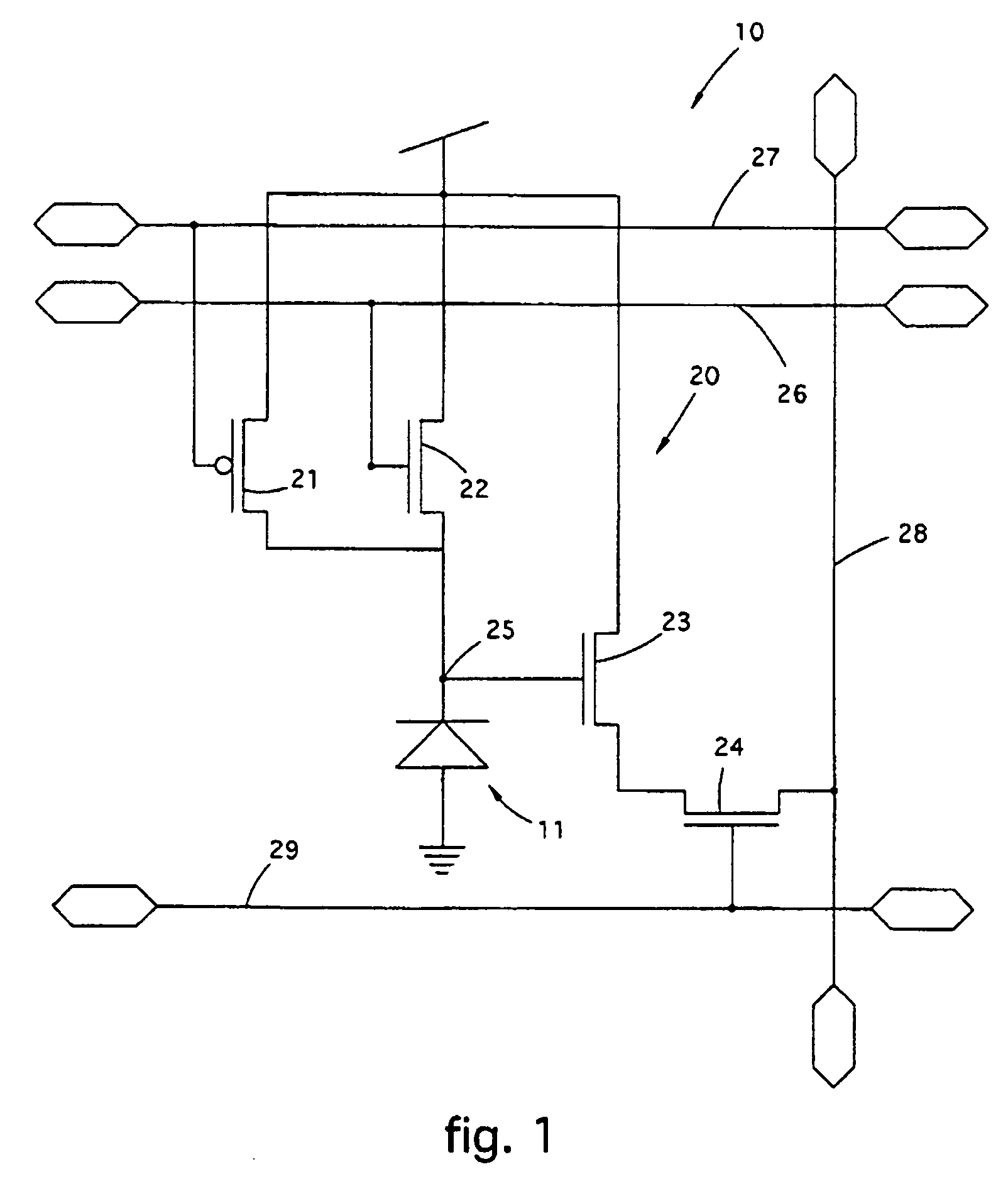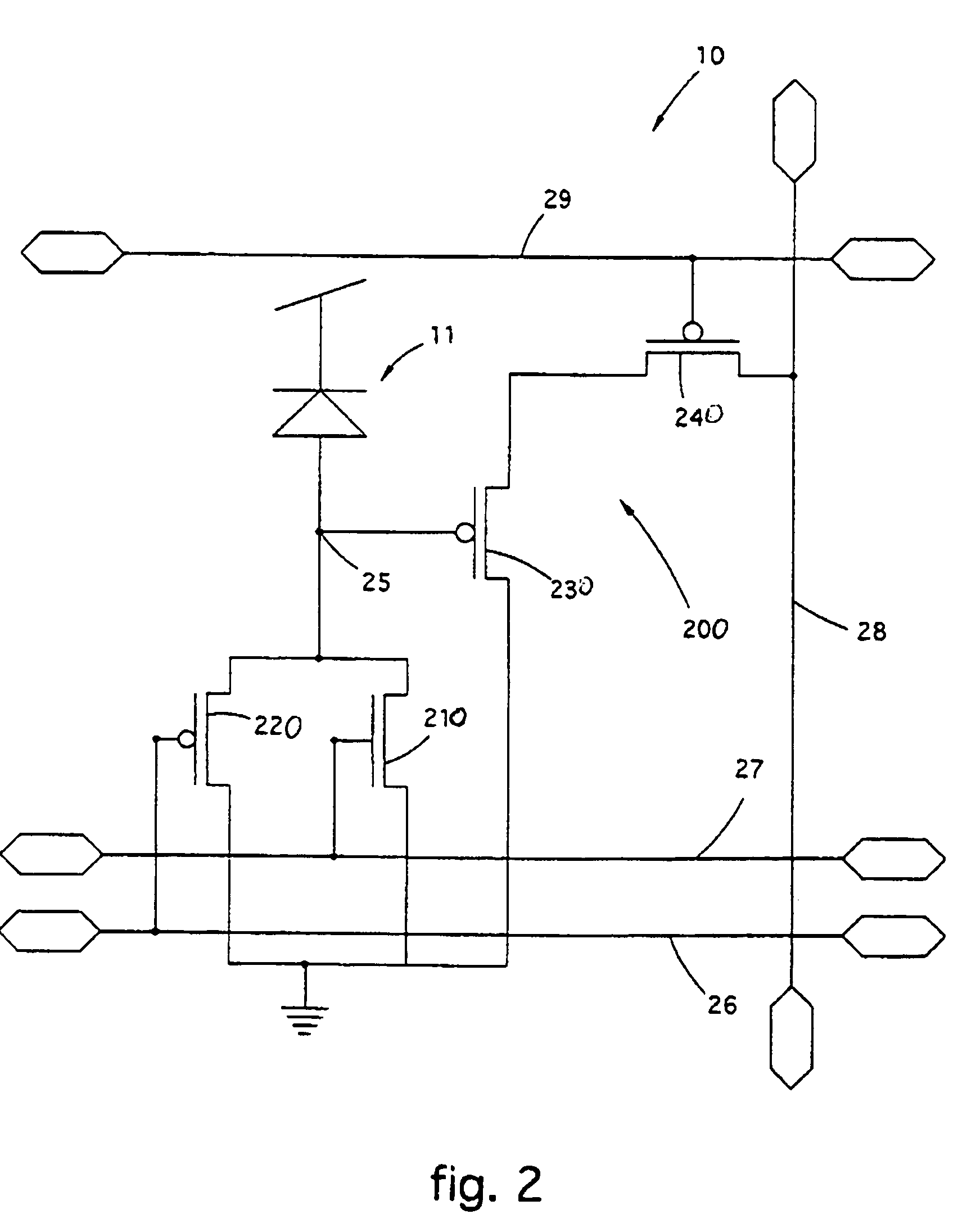Photo-sensitive element for electro-optical sensors operating under various illumination conditions
a technology of electro-optical sensors and photo-sensitive elements, applied in the field of photo-sensitive elements, can solve the problems of not being able to optimally operate in the presence, and not being able to arbitrarily select a sub-window inside the matrix sensor, etc., and achieve the effect of great precision
- Summary
- Abstract
- Description
- Claims
- Application Information
AI Technical Summary
Benefits of technology
Problems solved by technology
Method used
Image
Examples
Embodiment Construction
[0038]With reference to the attached drawings, and particularly to FIG. 1, a photo-sensitive element or pixel 10 according to the present invention consists of an inversely polarized diode 11 defining a photosensitive node 25, two transistors, respectively a first 21 of the P-channel type and a second 22, of the N-channel type, to polarize the photo-diode, and an amplification and reading circuit 20 comprising two transistors, respectively third 23 and fourth 24.
[0039]In the preferential embodiment, the first 21 and the second 22 transistors are of the CMOS type. When the first transistor 21 is of the P-channel type, it is able to represent an ideal switch, and when the second transistor 22 is of the N-channel type it is able to represent an active load. The number of N-channel type transistors may vary from 1 to 12 in order to increase by a corresponding value the logarithmic conversion gain of the current photo-generated by the polarized diode 11. The pixel 10 is of the type able ...
PUM
 Login to View More
Login to View More Abstract
Description
Claims
Application Information
 Login to View More
Login to View More - R&D
- Intellectual Property
- Life Sciences
- Materials
- Tech Scout
- Unparalleled Data Quality
- Higher Quality Content
- 60% Fewer Hallucinations
Browse by: Latest US Patents, China's latest patents, Technical Efficacy Thesaurus, Application Domain, Technology Topic, Popular Technical Reports.
© 2025 PatSnap. All rights reserved.Legal|Privacy policy|Modern Slavery Act Transparency Statement|Sitemap|About US| Contact US: help@patsnap.com



